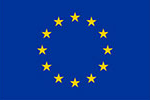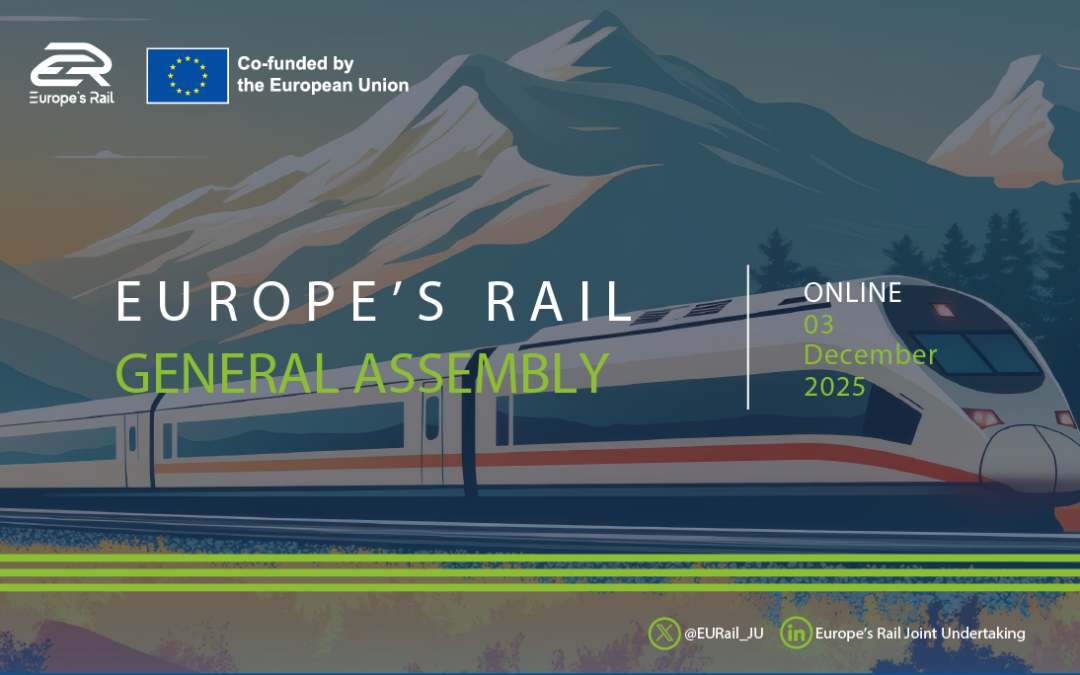Among the nine major Flagship Projects (FPs) funded by Europe’s Rail Joint Undertaking (EU-Rail), FP2-R2DATO plays a...
FP2-R2DATO
D13.1: Moving Block Specifications applying a train-centric approach
The document focuses on defining the system architecture, requirements and safety analysis for a Moving Block based on a train-centric approach using Full Moving block principles with Trackside Train Detection (TTD). The aim is to support future prototype development and ensure alignment with the overall CCS target architecture and harmonised operational rules.
The deliverable is divided into three parts, each addressing a key aspect of the train-centric Moving Block System:
-
- System Definition describes system objectives, capabilities, boundaries, functions, operational requirements and assumptions in order to cooperate with the Moving Block concept.
- System Specification details the system capabilities, functions, interfaces and specific domain objects of the Moving Block System.
- Safety Analysis introduces a novel method called System Theoretic Process Analysis (STPA), which focuses on identifying “unsafe control actions” in complex systems. The novelty of the STPA method lies in its potential to identify emerging risks stemming from the interaction between those (sub)systems, which are often overlooked.
How it brings us closer to achieving better rail for Europe: The Moving Block System supports the modernisation of European railways by making train control safer, faster and more efficient by enhancing the operations through advanced detection and analysis methods. Linked to the Control-Command and Signalling (CCS) architecture and harmonised operational rules, it helps build a smarter, interoperable, and more efficient rail network across Europe.
Target audience: Rail stakeholders, infrastructure managers, Member States, policy-makers, national safety authorities, notified bodies
More information on this topic: FLAGSHIP PROJECT 2: R2DATO
Pods4RAIL
D2.2: Evaluation/ Benchmark of available and conceptional multimodal mobility systems
Pods4Rail addresses the door-to-door travel and logistic needs of customers and enhances seamless experience. This new type of sustainable collaborative transport system may emerge as a new mobility offer, diverging from the current combination of individual and mass transport services. The study presents a comprehensive overview of existing Pod systems and, with a particular focus on rail-compatible ones, handling systems and other relevant systems was carried out. Secondly, an in-depth assessment of these systems, was conducted based on a set of characterisation parameters that were defined for this project. Thirdly, an exploratory and qualitative user analysis was conducted to investigate key user acceptance aspects of a potential future Pod system.
How it brings us closer to achieving better rail for Europe: This new transport solution is expected to contribute to strengthening the railway transport position in the future mobility market, with the use of cutting-edge technology for automation, digitalisation and electrification.
Target audience: Rail stakeholders, Member States, Policy Makers
More information on this topic: Pods4Rail
Pods4Rail addresses the door-to-door travel and logistic needs of customers and enhances seamless experience. This new type of sustainable collaborative transport system may emerge as a new mobility offer, diverging from the current combination of individual and mass transport services. The SWOT analysis describes the performed qualitative assessment of the socio-economic factors using a SWOT analysis for Pod system applications. Additionally, the study highlights strengths, weaknesses, opportunities, and threats of the autonomous Pod system for passenger and freight transport.
How it brings us closer to achieving better rail for Europe: This new transport solution is expected to contribute to strengthening the railway transport position in the future mobility market, with the use of cutting-edge technology for automation, digitalisation and electrification.
Target audience: Rail stakeholders, Member States, policy-makers
More information on this topic: Pods4Rail
FP6-FutuRe
D3.1: Use cases and scenarios for ATO in different GoA (Grade of Automation) demos for G1 regional lines
FP6-Future aims to ensure the long-term viability of the regional railway by reducing the total cost of ownership, while ensuring high service quality and operational reliability. This report covers use cases for G1 regional lines that allow automation of train operation on low-traffic lines with moderate speeds. The ATO functionality developed is using ERTMS/ETCS as a platform. The report specifies several use cases and technical requirements that ATO must meet to improve performance and overall economic sustainability of regional lines.
How it brings us closer to achieving better rail for Europe: The project develops a concept tailored to regional railways but transferable across Europe, encompassing digitalisation, automation and the use of common and new technologies for control command and signalling, wayside components, rolling stock and customer information.
Target audience: Rail stakeholders, Member States, policy-makers
More information on this topic: FLAGSHIP PROJECT 6: FutuRe
FP6-Future aims to ensure the long-term viability of the regional railway by reducing the total cost of ownership, while ensuring high service quality and operational reliability. This report provides a set of use cases and scenarios that reflect the operational behaviour of a regional line, in relation to some Traffic Management System (TMS) functions.
How it brings us closer to achieving better rail for Europe: The project develops a concept tailored to regional railways but transferable across Europe, encompassing digitalisation, automation and the use of common and new technologies for control command and signalling, wayside components, rolling stock and customer information.
Target audience: Rail stakeholders, Member States, policy-makers
More information on this topic: FLAGSHIP PROJECT 6: FutuRe
















